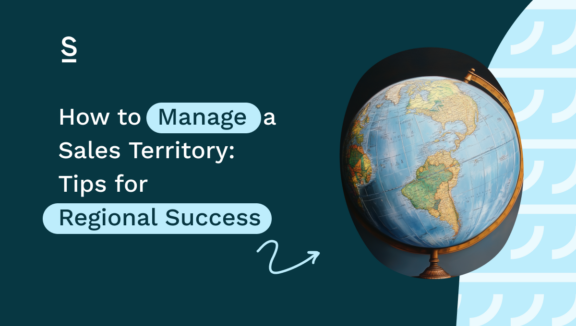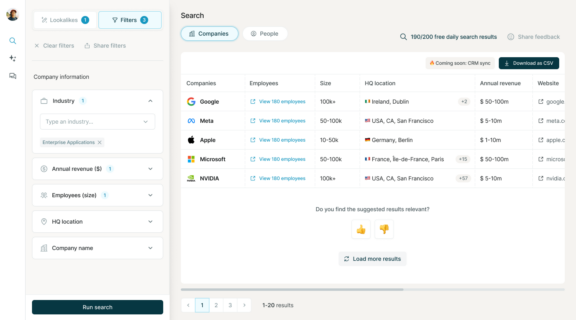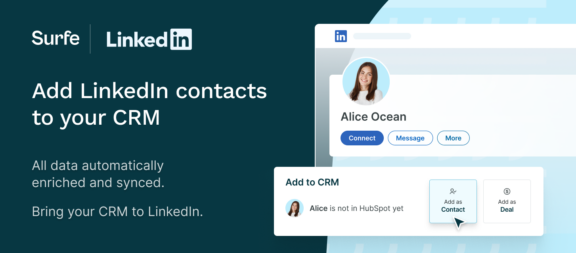How to Manage a Sales Territory: Tips for Regional Success

Woah – look at you, big shot!
If you’re reading this, we’re pretty sure that you’ve just started managing a new sales territory. Or maybe you’ve been looking after a designated country, continent, or specific area for a while and want to make sure you’re staying ahead of the curve.
Being responsible for a certain patch of the globe is important stuff. Back in the olden days, it might have come with a move cross-country or even across the world; now, you can manage a region from anywhere.
There’s probably a high chance that you don’t physically work in the area you’re looking after. Instead, as we live in the magical age of the World Wide Web, you can sell via LinkedIn, email, or phone. What a time to be alive!
In this blog post, we’re going to run through the tools and tricks of the trade you can use to hit the ground running:
By the time you’ve finished reading – which will be very, very soon – you’ll have a framework for finding and nurturing relationships with brand-new regional clients. Er, yes please.
Understanding Your Territory
We’re going to start at the very beginning. Imagine you know literally nothing about your region. Zilch. Nada.
If this sounds familiar (or you dove in at the deep end and feel your foundational knowledge could be brought up to scratch) then start off by researching the key industries, economic conditions, and major players (read: competitors or complementary technologies) in your area.
Next up, you’ll want to figure out which segments of the market are most likely to need your product or service. This is going to be very unique to your business – essentially, you want to take your ICP and map different segments of the market onto it. From there, you should be able to paint a picture of absolutely ideal, so-so, and absolute no-no prospects.
Tip: you might be working with cultural and business practices that are unfamiliar. Do your research and speak to local people to get a sense of how these might – or might not – impact communication and engagement strategies.
Building a Target List
Now you have an idea about the type of business you’re going after. Anyone got any idea how to find them…Anyone? Hello?
Looks like it’s time to introduce ourselves. We’re Surfe – nice to meet you.
Surfe will rock the world of any regional sales manager. It helps you quickly and easily identify decision-makers in a specific region, based on criteria like job role, seniority, industry, and so on and so forth.
If this sounds like it might be a battle to use – far from it. Surfe’s built with streamlining workflows in mind, in fact. Here’s how it works:
Surfe allows you to quickly and easily find companies that fit the bill, by using clever filtering to narrow down its huge database of businesses. You can filter by location, job role, seniority, and more – and once you’ve found five companies that fit the bill, Surfe’s ‘Company Lookalikes’ feature will then build you a list of, you guessed it, similar companies.
Once you’ve got a promising-looking list, we’d recommend segmenting it by deal size, industry, readiness to buy, and so on.
The last piece of the puzzle is verifying contact information. Not to bang on and on about ourselves, but if you’ll allow us, Surfe will handle it for you. It automatically uses waterfall enrichment technology to find and verify accurate email addresses and phone numbers – and even runs email addresses through ZeroBounce to make sure your emails end up where they’re supposed to. See what we mean about streamlining your workflow?

Outreach Strategy
So, you’re an expert in the region you’re responsible for (well done) and you have a nice list of people you’re excited to speak to (double well done).
It’s now time to get their attention. Let’s take a look at the key channels you might use to do so:
LinkedIn Outreach
You work in B2B sales: we’re sure you’re a dab hand at LinkedIn outreach by now. Use template messages where possible to help speed the process along when you’re working at scale – but don’t forget to lightly personalize, and to regularly test other options to make sure your messaging is still on point.
One thing you might be less familiar with is social selling, which isn’t to be sniffed at: 78% of sales reps who practice social selling outsell their peers.
If you want to be part of that 78% – duh, of course you do – then you need to start building relationships on LinkedIn outside of your DMs. That means posting industry insights to your own account, interacting with your prospect’s posts, and getting involved with industry-specific groups. The idea behind this all is that if people get used to seeing your name and your insights, a DM from you isn’t going to feel so out of the blue. Rather, it will feel like a familiar face has popped up to say hi – and they’ll be more receptive to what you have to say as a result.
Cold Emailing
Cold emailing makes an excellent partner for social selling. Again, if someone’s familiar with your name and what you do, they’re not going to be surprised when you pop up in their inbox. Hello, open rates!
Make sure your cold emails have personalized subject lines (which get 22% more opens than generic ones) and schedule your follow-ups from the start. Lemlist recommends making between 4-9 follow ups – in other words, if you don’t make any at all, you’re seriously damaging your chances of getting a response.
Cold Calling
Only 2% of cold calls result in meetings – but that doesn’t mean you should write cold calling off altogether. Instead, you just need to make sure you’re doing it properly.
Don’t worry too much about time of day (within reason. We can’t think of many people who’d appreciate a work call at 1am) and instead worry about getting your follow-ups right. 44% of sales pros give up after just one follow-up – you can do better than that, right?
Make sure to include voicemails in your cadences – but don’t overdo them. Nobody wants an inbox full of the same voice. Instead, sprinkle them throughout your cadence with plenty of space in between and keep your messages to the point and focused on value.
Cadence Management
Whichever channels you use, make sure to create a cadence with a balance between all three. The most successful cadences use at least 16 touches – just make sure to give your prospect breathing space in between them, and know when to finish up and move the prospect into a nurture email sequence.

Maximizing the Use of Tools and Technology
If all of this sounds like hard work – you’re right. Who said sales was easy?! That said, there are some lovely tools you can use to help keep your workflows manageable and free up to spend on the highest-impact activities.
CRMs: a good CRM can boost your productivity by 34% – sounds pretty good, right? Add every lead into your CRM from the get-go (Surfe does this automatically, btw) and add them into a workflow so you can track cadences and make sure you’re hitting all your touchpoints. They’re also an excellent data source when it comes to improving your processes.
Sales automation: automation tools like ActiveCampaign can make writing and sending email sequences a breeze – and remember, the more you nurture your prospects, the more likely they are to get to the closing stages of a deal. Using AI and lead scoring tools can also help you prioritize the right prospects – meaning every message you send has maximum impact.
Prospecting: finding high-quality leads at scale can be a bit of a headache – unless you have a tool like Surfe to do it for you. Make sure that your tool of choice prioritizes accuracy, enriches your lists with contact details, and handles the manual data transfer (Surfe does all three of those, btw).

Tracking KPIs for Success
Of course, there’s no point in employing all these fun tips and tricks and then not tracking their success. What works best will be different for each company, and it’s important you work out the best approaches for you. Key performance indicators to track include:
Number of contacts: basically, are you finding enough people to convert into sales and hit your quotas?
Follow-up rates: how many times do you follow up?
Time spent per lead: how much time do you spend on each lead? Is it too much, or too little? Remember that spending some time on nurture is key: the best companies close 30% of sales-qualified leads.
Response times: did you know that 50% of sales go to the vendor that responds first? Do we need to elaborate? No? Thought so.
Sales productivity: how much time do you spend actually selling instead of doing admin? Most reps only spend 28% of their time selling – if you’re spending even less time than this, see what activities you could streamline or automate.
Nurturing Relationships
By now, you should have a number of fledgling relationships that you need to take to the next level. Tactics for nurturing prospects include:
Personalized follow-ups: maintain contact through emails and phone calls, and make sure you refer to previous conversations throughout. 80% of sales require five follow-ups after the initial meeting, so don’t sleep on this bit.
Build trust through content: make sure that your prospect understands that your business is a leader in the space – and by proxy, something they can trust. Content like case studies and whitepapers can teach prospects more about what you do, and build credibility too.
Leveraging referrals: 84% of buyers start their buying process through referrals. Makes sense, right? You’d much prefer to buy something that’s already been vetted, so to speak – well, your prospects are no different. Ask for referrals where you can – your current customers are potentially sitting on a gold mine of future clients.
Adapting and Improving Your Approach
Remember those KPIs we talked about earlier? It’s vital to be checking up on these so you get a sense of what’s working, and what’s not.
You can also ask for buyer or prospect feedback where appropriate, to make sure you’re getting everything right. 87% of business buyers expect a sales rep to act as a trusted advisor – and you can’t do this without a sense of what your prospects want advising on.
Test various channels, tools, and techniques to make sure you’re always one step ahead. The region you’re selling to will thank you!
Let’s Wrap It Up!
Managing a specific region is a big responsibility – but it’s a challenge that we know you’re up for.
Approach your territory methodically – building a target list, crafting an outreach strategy, using tools and tech to help you, and nurturing relationships going forward – and you’ll be onto a winner in no time at all.
Let us know when you’re responsible for the entire planet, ok?

You know what to do…
Time to give Surfe a try! Did we mention it’s free?
FAQs About Managing a Sales Territory: Tips for Regional Success
What’s The Best Way To Manage A Large Sales Territory?
Manage a large territory by getting to know the target market, and identifying which market segment is most closely aligned with your ICP. From there, use a tool like Surfe to hunt down companies that fit the bill and AI and automation tools to make the prospecting process easier. This technique allows you to focus your efforts and work at scale without compromising quality.
How Do You Build Relationships In A New Sales Territory?
Start by researching key players in the area and reach out to them on LinkedIn, via email, and over the phone. Employ social selling to make sure that you’re a familiar face, and make sure you build a sustained cadence to maximize your chances of getting in touch. Once the relationship is off the ground, be sure to nurture your prospect with regular contact, marketing materials, and personalized help and support.


